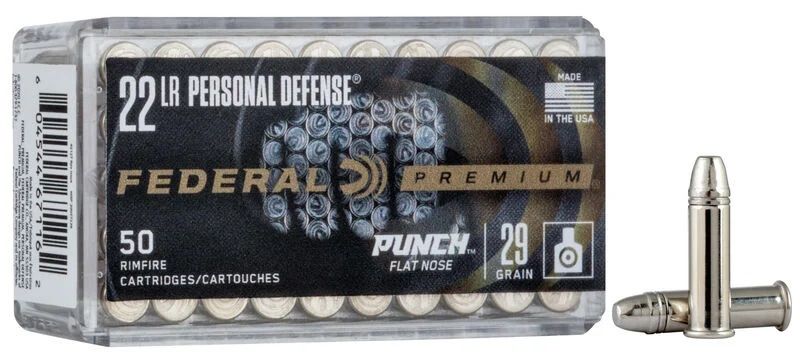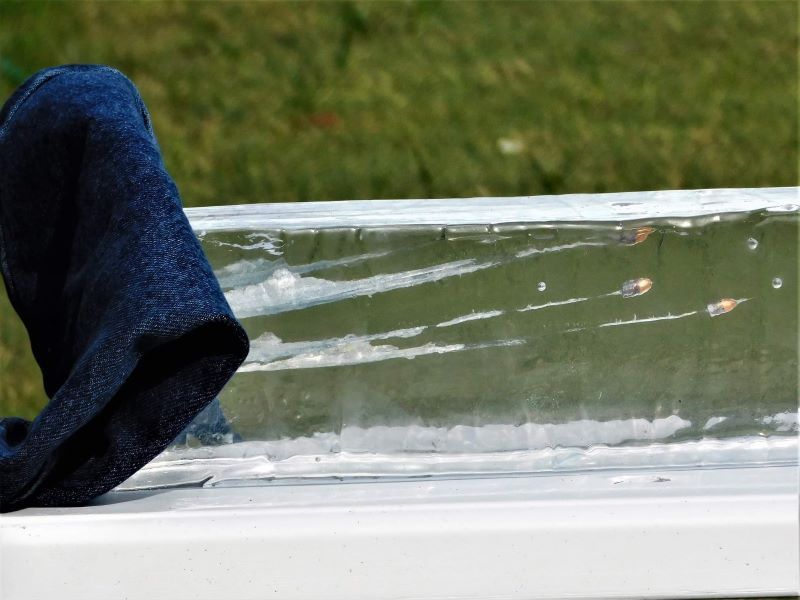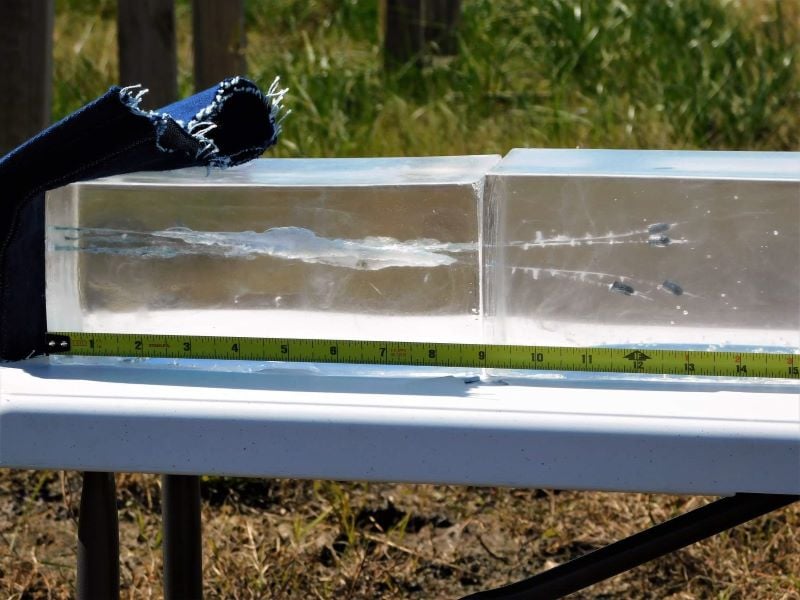Why would anyone choose to defend themselves with the .22 Long Rifle? Surely, there are other choices that would be far better. Let’s take a look at why we might decide to rely on the .22 LR to defend life and limb.
There are those who will laugh at the idea of using a .22 for defensive reasons. Those same people were likely never shot with one.

The .22 Long Rifle needs little introduction, having a long and storied history in American shooting lore. It dates back to the late 1880s. A high percentage of shooters have started shooting with the .22 LR because of the advantages that it offers. Namely, low recoil, muzzle blast, and noise. It’s probably a fair statement to say that the .22 LR is one of the most popular calibers in the United States, given the recent shortages of the .22, and the rate at which people were madly emptying it off the shelves.
Advantages
.22 LR ammunition is inexpensive. Because of the lower cost of the ammunition, shooters can store away a goodly supply for a rainy day. As well, .22 LR firearms are generally less expensive than those that come in larger calibers. The low muzzle blast, noise, and recoil make it easy to control by both beginners and advanced shooters. Firearms in this caliber are typically light and easy to handle.
If you’re venturing out into the wilds, you can tote along a nice supply of .22 LR ammo in a pack; a brick of 500 rounds is not out of the question, as it doesn’t weigh very much.
Ammunition
Below are some velocities that were listed by manufacturers to give you a general idea of what the .22 LR is capable of. Keep in mind that these are likely taken from rifle-length barrels, which will be different than short pistol barrel velocities.
- CCI Stinger: 32 grains—1,640 feet per second.
- CCI Mini-Mag: 36 grains—1,260 feet per second.
- CCI Velocitor: 40 grains—1,435 feet per second.
- Remington Golden Bullet: 40 grains—1,255 feet per second.
- Remington Thunderbolt: 40 grains—1,255 feet per second.
- Federal “Punch” Personal Defense: 29 grains – 1,070 feet per second.
- Winchester “Silvertip” Hollow point: 37 grains – 1,070 feet per second.
Federal has even come out with a specific load for the .22 LR, their Personal Defense “Punch” ammunition. It features a nickel-plated lead core bullet. It’s a flat-nosed bullet intended to penetrate sufficiently with short-barreled handguns. Federal states that it achieves 1,070 through a two-inch handgun barrel, and 1,650 from a 24-inch rifle barrel. This is something to take notice of when a manufacturer specifically makes rounds geared toward defense for the .22 LR.

Winchester also has a defensive load: the Silvertip hollow point in .22 LR that is designed to break up into four pieces upon impact. Their quoted velocity for this 37-grain slug is 1,070 from a two-inch barrel.
I have some thoughts on a bullet designed to break up (mind you, I’ve not tested the Silvertip, nor heard reports about its effectiveness), especially in a small caliber such as the .22 LR. It’s already very small. I’m not sure that having it break up even more is such a great idea. I’d personally feel more comfortable having a .22 LR round that holds together in one piece and penetrates deeply so that it reaches vital organs. That’s just me.
On the other hand, having a couple of separate wound channels might be an advantage. I guess the jury will be out on this one (no pun intended) until reports of the round’s street effectiveness start rolling in.
Personally, I think it’s refreshing to see ammunition manufacturers making rounds specifically to enhance the .22 LR for defensive purposes. It also indicates that people want these products, or the ammo makers likely would not be making them. So a demand apparently exists.
Other Applications
Various military units have used the .22 LR, as far back as WWII. It can be suppressed to extremely quiet levels, which lends itself to a number of applications. And it’s not just the US that has used it; Israel and other countries have taken notice and employed the .22 LR. Israel used a suppressed version of the Ruger 10/22 to take out rioters by shooting them in the leg as a “less lethal” option (it turned out to be a bit more than “less lethal”, however, and was discontinued).
Militaries have been using the .22 LR in suppressed versions for sentry removal and removal of guard dogs for many decades. During the Vietnam war, suppressed .22 LR pistols (mostly the High Standard HDMS) were used, mostly by Special Forces and the CIA. From what I can gather, the OSS used the High Standard pistol and suppressor during WWII, as well.
In Northern Ireland during the 1970s, the British Army issued the Walther PP to their soldiers for self-defense when they were off duty.
Law enforcement has even been known to use it on occasion when they need a quiet round that won’t over-penetrate.
Lethality
Given its long and storied military career, there can be little doubt that the .22 LR is lethal. Shot placement, naturally, has always been stressed as being paramount. Shot placement with any caliber is important, but even more so when we are talking about a tiny round such as the .22 LR.
I doubt that anyone knows exactly how many people have been planted due to the .22 LR, but one thing is for certain: It is a lot! Not necessarily because it is a super-lethal round. Rather, because the .22 LR has been around for so long and in such huge numbers.
Nevertheless, incidents abound where the .22 was used to defend the home successfully—especially .22 rifles, with their longer barrels and higher velocities.
Practice
Undeniably, the .22 LR allows people to practice a lot more than with any other caliber due to being the least expensive round out there at this time. I’ll be honest, I shoot my .38 revolver very sparingly because, at the time of this writing, FMJ ammo for it costs about $35 for a box of 50. It’s one of my handguns that gets shot very little and carried a lot more than it’s shot. I should practice more with it, but the reality is that I’m not made of money.
The .22 LR ammunition, however, costs a fraction of what the larger calibers do (and this has always been the case). This allows for far more practice with the “Mouse Gun.” There’s a lot to be said for someone who practices a great deal with a firearm. They will feel more confident with the gun and be a more effective shooter as opposed to using a gun that they are unfamiliar with and scared of.
Many years ago, I heard an account of an elderly woman who was living in South Africa. She had a .22 LR Colt Woodsman pistol that she shot very often and became extremely comfortable and skilled with. As fate would have it, a marauding band of would-be murderers descended upon her ranch one night and she had to use her .22 to defend herself. If my memory serves me correctly, she took out ten of the miscreants. Each one was found to be shot in the head. Think about it—a grandmother took out a large number of hostile attackers with headshots. At night. Could we all do as well as she did?
Evidently, the practice and low recoil of that pistol allowed her to feel at ease with using it. And use it she did!
Recoil
This is possibly the best aspect of the caliber—there almost isn’t any recoil! Follow-up shots are lightning-fast. New shooters aren’t scared away. They can focus on learning accuracy and delivering fast shots, which equates to confidence. To be an effective shooter, that’s important.
Diminished Physical Capacity
Some people are not combat-trained or competition shooters who spend every waking moment training or reading up on guns.
For people who have physical infirmities that prevent them from working the slide on heavier calibers or even picking up heavier firearms, the .22 can provide a valued alternative. The recoil springs on most .22 caliber firearms are fairly light, allowing people who can’t operate the slide on, say, a 9mm to be able to do so on a .22 LR.
As we age, arthritis becomes more of an issue with many of us. Things like racking a heavy slide can cause pain. Recoil jolting our hands can also cause pain. You don’t see too many elderly folks at the shooting range firing Airweight revolvers with full-house .357 Magnum loads (to be fair, you don’t see many sane younger people doing that either).
The point is, the .22 LR is less punishing on our bodies than other calibers. For people with physical issues, that can be important.
And .22 LR rifles are even tamer to shoot, with nearly no recoil and less than moderate muzzle blast. Lots of shots can be delivered into very tight groups in a short span of time. A lot of rounds in a small area quickly can spell success for self-defense.
Good For Non-Gun People
Let’s face it, not everyone is a “gun person.” If you’re reading this article, you very well may be a gun person, or at least you’re interested in self-defense enough to read this article. Non-gun people are not going to appreciate such aspects of shooting as recoil and muzzle blast.
The fact that the .22 LR does not have a huge muzzle blast or recoil might make it the most attractive option for those who want to defend themselves with a firearm. Is the .22 LR optimal? Not really, but it gives a niche group of people an option.

My youngest daughter is not a gun person at all. I did, however, teach her how to use a Ruger 10/22 in the event there are invaders while no other family members are home. She is well-versed in how to operate it. I’d never ask her, at this point in time, to pick up an AR-15 because it would scare the living daylights out of her. But that 10/22, with its lack of recoil and minimal muzzle blast, is a realistic alternative.
Now for the best part: that 10/22 has a 25-round magazine in place, and there are a couple of other magazines handy nearby in case 25 shots are not enough. Realistically, though, it’s likely that 25 rounds will persuade a home invader to leave very quickly. And if he does not leave, that is a lot of potential holes in his body.
Increased Capacity
When revolvers are chambered for the .22 LR, they typically have more capacity than higher-caliber revolvers. Given that the bullets are smaller, having more of them offsets their low power, at least a little bit.
Back-Up
One of the defensive roles that the .22 LR handgun sometimes takes on is as a backup to a full-sized handgun. Being light and small makes them concealable and handy.
Penetration And Performance
As mentioned, the .22 LR is no powerhouse. Penetration seems to vary greatly. My friend, James Hebert, does ballistic testing, and he showed me some results that he’s experienced.

A 40-grain CCI Mini Mag was fired into 10% ballistic gelatin from ten feet. The handgun was an NAA Sidewinder, fired from ten feet through four layers of denim. The penetration appeared to be around eight or so inches at the deepest. The slugs appeared to stay intact with little deformation.
When fired into 10% ballistic gelatin from a Marlin Papoose (16-inch barrel) from 25 yards using CCI Blaser 40-grain lead bullets through four layers of denim, penetration was 12-13 inches.

Conclusion
Acknowledging the .22’s limitations, there are, in my opinion, enough pluses to outweigh the disadvantages.
Lightweight, small handguns can be very attractive for concealment. Ones that do so with very little muzzle blast and recoil make the package even more alluring. Even for people who are not into firearms, the .22 LR can allow them to become proficient enough to defend themselves.
Of course, the added velocity of a rifle-length barrel only adds to the effectiveness of the .22 LR.
No one is saying that the .22 LR is a miracle worker. However, it sure beats having nothing at all. In the right hands, it can get the job done if the shooter does their part.


